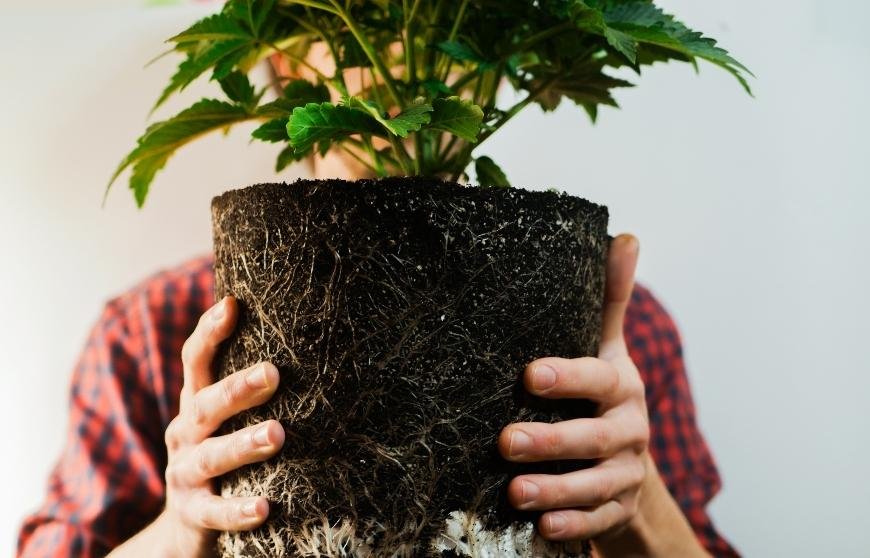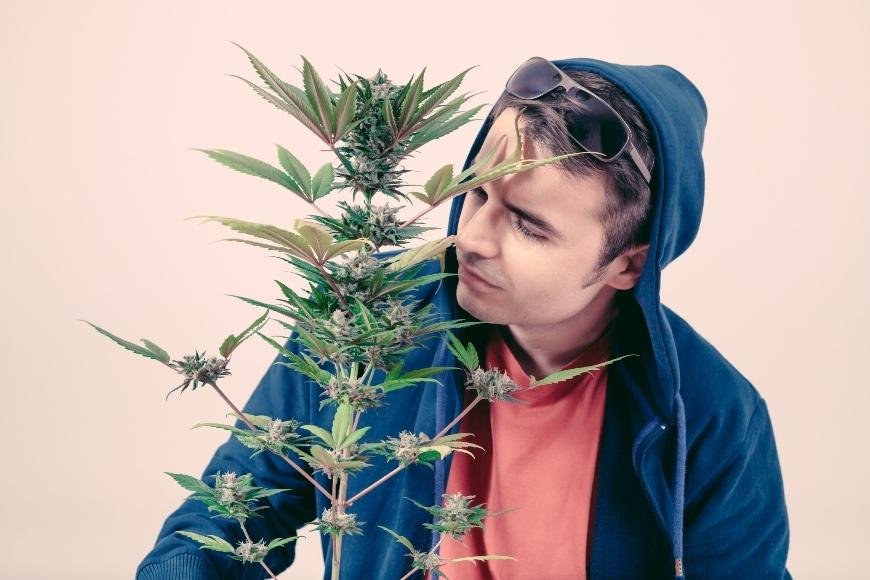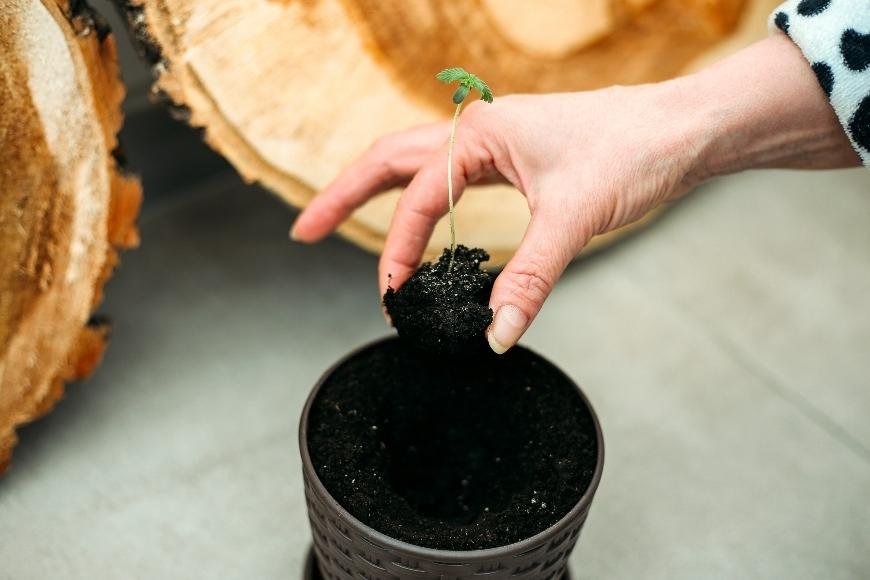The Most Common Cannabis Grower Mistakes
Discover the most common cannabis grower mistakes and learn how to avoid them, ensuring a successful harvest with our comprehensive guide for novice growers.

As cannabis cultivation becomes increasingly popular, understanding the most common cannabis grower mistakes is crucial for both novice and experienced growers. A successful harvest depends on various factors such as watering, pH balance, nutrients, airflow, and pest control. To aid both novice and experienced growers in achieving a successful harvest, this blog post will explore the top 10 most common cannabis grower mistakes.
By examining the top 10 most common grower mistakes in detail, you can learn how to prevent issues like overwatering or underwatering your plants and maintaining optimal pH levels. Additionally, we will discuss the importance of balanced nutrient schedules and adequate airflow for healthy plant growth.
Lastly, we'll explore effective pest control methods that can save your entire garden from infestations. By avoiding these most common cannabis grower mistakes, you are well on your way to a thriving crop with potent yields.
Table of Contents:
- Understanding Mistakes for Improved Cultivation
- Top 10 Most Common Grower Mistakes
- Over/Under-Watering
- Maintaining Optimal pH Balance
- The Most Common Cannabis Grower Mistakes
- Adequate Airflow
- Effective Pest Control Methods
- Conclusion
Understanding Mistakes for Improved Cultivation
Growing cannabis can be a rewarding and enjoyable experience, but it's not without its challenges. Even experienced growers make mistakes from time to time. The key to improving your cultivation skills is understanding these common errors and learning how to avoid them.
Patience is essential for successful cannabis cultivation, as it takes time to nurture seedlings into healthy plants; rushing or neglecting the process can lead to failure. It takes time for cannabis seeds to develop into healthy plants, so rushing through the process or cutting corners will only lead to disappointment. It is essential to be vigilant and flexible in order to spot any possible issues promptly, allowing you to take corrective measures before they become major problems.
- Mistake #1: Overwatering or underwatering your plants - Both overwatered plants and underwatered ones can suffer from stunted growth, nutrient deficiencies, root rot, or even death. To avoid overwatering, it's important to use a growing medium that drains well and to avoid watering too frequently. To avoid underwatering, make sure to water your plants thoroughly and consistently.
- Mistake #2: Improper pH balance - Maintaining an optimal pH level in your growing medium ensures that nutrients are available for uptake by the plant roots. Use a pH testing kit to monitor and adjust the pH level as needed.
- Mistake #3: Excessive nutrient use - Overfeeding can cause nutrient burn which harms the overall health of your cannabis plants. Follow the recommended nutrient schedule and use a high-quality nutrient solution.
To avoid these common pitfalls when growing cannabis at home, education, observation, and practice are essential components in honing one's skills as a cultivator. By addressing these top grower mistakes head-on with proper techniques like growing hydroponically or using grow lights, you can enhance your cannabis cultivation abilities, leading to healthier plants and higher yields.
By understanding the common mistakes made by cannabis growers, we can make sure to avoid them in order to achieve successful cultivation. Let's examine the blunders frequently made by cultivators which should be stayed away from.

Top 10 Most Common Grower Mistakes
Cultivating cannabis can be a satisfying activity, yet it's not free from obstacles. Even experienced growers may fall into common traps that can negatively impact their plants' health and yield. To help you avoid these pitfalls, we've compiled a list of the top 10 most common mistakes made by cannabis growers:
- Choosing poor genetics: Starting with high-quality cannabis seeds is crucial for successful cultivation.
- Failing to properly germinate seeds: Properly germinating cannabis seeds ensures healthy seedlings and strong growth.
- Inadequate lighting: Using appropriate grow lights, especially when growing indoors, promotes robust plant development.
- Mismanaged watering practices: Overwatering or under-watering your weed plants can lead to root rot or stunted growth. It's important to avoid overwatering.
- Neglecting pH balance: Maintaining an optimal pH level in your growing medium is essential for nutrient absorption and overall plant health. Use a pH testing kit to ensure proper balance.
- Oversupply of nutrients: Excessive use of nutrients can cause nutrient burn, while insufficient amounts result in nutrient deficiencies. It's important to find the right balance for your cannabis plants.
- Growing in poor conditions: Growing cannabis outdoors in unsuitable climates or in a poor growing medium can lead to stunted growth and poor yields.
- Harvesting too early or too late: Timing is everything when it comes to harvesting your cannabis plants. Harvesting too early can result in lower yields, while harvesting too late can lead to a decrease in potency.
- Ignoring signs of pests and disease: Failing to identify and treat pests and diseases can quickly spread throughout your entire garden and kill your plants.
- Not adjusting for the flowering stage: During the flowering stage, your weed plants require different nutrients and lighting than during the vegetative stage. Make sure to adjust accordingly.
Making mistakes as a cannabis grower is inevitable, but by avoiding the most common ones you can ensure that your crop yields its maximum potential. To further reduce errors and increase success, it's important to understand the risks of over-watering or under-watering plants in order to maintain optimal moisture levels for growth.
Over/Under-Watering
Incorrect watering practices can lead to either overwatering or underwatering, both of which may adversely affect the health and growth of cannabis plants. Both scenarios can have negative impacts on your cannabis plants' health and growth.
The Dangers of Overwatering
Overwatering occurs when growers provide too much water to their cannabis plants, causing the roots to become saturated and unable to access oxygen. This can result in root rot, stunted growth, and nutrient deficiencies. Signs that you may be overwatering include yellow leaves with drooping tips and a heavy, wet growing medium.
The Risks of Under-Watering
On the other hand, under-watering deprives your cannabis plants of essential moisture needed for proper nutrient uptake and cellular function. Symptoms include dry soil or growing medium, wilting leaves, slow growth rates, and reduced yields at harvest time.
Tips for Proper Watering Techniques:
- Maintain consistent moisture levels: Keep an eye on your growing medium's moisture content; it should remain consistently moist but not soggy throughout the entire garden.
- Finger test: Insert a finger into the soil about two inches deep - if it feels dry at this depth then it's time to water your cannabis plants again.
- Lift test: Lift pots before and after watering them; they should feel lighter when they need more water due to less weight from absorbed liquid in their contents (soil).
- Use a moisture meter: A moisture meter can help you accurately gauge your plants' water needs, ensuring that they receive the right amount at all times.
Incorporating these tips into your cannabis growing routine will help you avoid overwatering and under-watering issues, leading to healthier plants and better yields. Novice growers should pay extra attention to watering practices, as it is a common mistake made by those new to growing cannabis. Experienced growers should also be mindful of common errors such as bad genetics, nutrient burn, and poor pH testing kit usage. Additionally, growing cannabis outdoors or hydroponically can present unique challenges that require careful attention to watering practices to avoid killing your plants. Germinating cannabis seeds and using grow lights during the flowering stage are also important factors to consider when growing weed plants. By avoiding common mistakes and following proper techniques, you can ensure a successful cannabis growing experience.
Giving too much or too little H2O to your cannabis can drastically affect its growth and productivity, so it's essential to monitor the amount of liquid you're supplying. Ensuring that the soil in which your cannabis plants are planted is at an ideal pH level can help ensure all vital nutrients reach their roots, allowing them to thrive.
Maintaining Optimal pH Balance
One of the most crucial factors in successful cannabis cultivation is maintaining an optimal pH balance. The wrong pH level can lead to nutrient deficiencies, stunted growth, and even kill your plants. Maintaining proper pH balance is essential for successful cannabis cultivation, and we'll explain how to do so here.
Why is pH Important?
The pH level determines how well your cannabis plants can absorb nutrients from their growing medium. If the pH is too high or too low, essential nutrients become unavailable to the plant's roots, leading to various health issues. Ideal pH levels for cannabis vary depending on whether you're growing in soil or hydroponically:
- Soil: Aim for a slightly acidic range between 6.0 and 7.0.
- Hydroponics: A more acidic range of 5.5-6.5 is ideal.
pH Testing & Adjustment
To maintain optimal conditions for your cannabis plants, invest in a reliable pH testing kit. Regularly test both water input and runoff from your pots or system to ensure consistency throughout the grow cycle.
If you find that adjustments are needed, use appropriate products like phosphoric acid (to lower) or potassium hydroxide (to raise) until desired levels are reached—always following manufacturer instructions carefully.
In conclusion, maintaining proper pH levels is essential for healthy cannabis plants. By investing in a pH testing kit and making necessary adjustments, you can avoid common mistakes made by novice growers and ensure a successful harvest time and time again.
Maintaining optimal pH balance is essential for cannabis growers to achieve the best yields and quality of their crops. However, it's not enough on its own; having a balanced nutrient schedule is also necessary in order to ensure successful growth.
The Most Common Cannabis Grower Mistakes
As a cannabis grower, it's essential to avoid common mistakes that can harm your plants and reduce your yield. Whether you're a novice or experienced grower, here are some of the most common errors to watch out for:
Bad Genetics
One of the most significant factors that can affect your cannabis plants' growth and yield is genetics. If you start with poor genetics, you'll likely end up with stunted growth, low-quality buds, and a disappointing harvest. To avoid this mistake, always buy cannabis seeds from reputable sources and do your research on the strain's characteristics before purchasing.
Overwatering
Overwatering is a common mistake made by novice growers. When you water your plants too frequently or give them too much water at once, it can lead to root rot, which can kill plants. To avoid overwatering, make sure to let the soil dry out between watering and use a pot with proper drainage.
Nutrient Deficiencies
Providing your cannabis plants with the right nutrients is crucial for healthy growth and development. Nutrient deficiencies can occur when your plants don't receive enough of a specific nutrient, leading to stunted growth, yellowing leaves, and other issues. To avoid this mistake, make sure to use a high-quality nutrient solution and follow the manufacturer's instructions for application.
Poor pH Management
pH levels can affect your plants' ability to absorb nutrients, and if the pH is too high or too low, it can lead to nutrient deficiencies or toxicities. To avoid this mistake, invest in a pH testing kit and adjust the pH of your nutrient solution as needed.
Insufficient Lighting
Light is essential for cannabis plants to grow and develop properly. If your plants don't receive enough light, they may become stunted, and their buds may not develop correctly. To avoid this mistake, invest in high-quality grow lights and make sure to provide your plants with the right amount of light for each stage of growth.
Not Harvesting at the Right Time
Harvest time is crucial for cannabis growers, and harvesting too early or too late can affect the quality and potency of your buds. To avoid this mistake, make sure to monitor your plants closely and harvest when the trichomes are at their peak.
Using the Wrong Growing Medium
The growing medium you choose can affect your plants' growth and development. Using the wrong medium can lead to nutrient deficiencies, root rot, and other issues. To avoid this mistake, choose a high-quality growing medium that's appropriate for your growing setup.
Not Germinating Seeds Properly
Germinating cannabis seeds is the first step in growing healthy plants, and if you don't do it correctly, it can lead to low germination rates and weak plants. To avoid this mistake, make sure to use a reliable germination method and follow the instructions carefully.
Not Adjusting for Growing Outdoors
Growing cannabis outdoors can be challenging, as you'll need to adjust for factors like temperature, humidity, and pests. To avoid this mistake, make sure to research the specific needs of your strain and take steps to protect your plants from the elements.
Not Adjusting for Growing Hydroponically
Hydroponic growing can be an effective way to grow cannabis, but it requires a different approach than traditional soil growing. To avoid this mistake, make sure to research the specific needs of hydroponic growing and invest in the right equipment.
By avoiding these common mistakes, you can ensure healthy growth and a bountiful harvest for your entire garden.
Balanced nutrient schedules are essential for healthy and successful cannabis growth. Proper air circulation is a must to guarantee your plants get the right amount of nutrients and avoid mildew or mold from appearing on foliage.

Adequate Airflow
Ensuring adequate airflow is crucial for the overall health and growth of your cannabis plants. Proper ventilation helps maintain optimal temperature and humidity levels, prevents mold and mildew formation, strengthens plant stems, and promotes efficient gas exchange. Inadequate airflow can lead to a myriad of issues such as stunted growth, poor yields, or even an entire garden succumbing to pests or diseases.
Importance of Proper Ventilation
- Maintaining Temperature & Humidity: Adequate airflow helps regulate the growing environment's temperature and humidity levels by dispersing heat from grow lights evenly throughout the space.
- Preventing Mold & Mildew: Good air circulation reduces moisture buildup on leaves which can cause mold or mildew infections in your cannabis plants.
- Promoting Gas Exchange: Plants require carbon dioxide (CO2) for photosynthesis; proper ventilation ensures that fresh CO2-rich air is available while removing oxygen-rich air produced during this process.
- Bolstering Plant Strength: Gentle breezes stimulate stem development making them stronger against potential stressors like wind damage when growing outdoors.
Tips for Ensuring Adequate Airflow
- Add oscillating fans strategically placed around your grow room to promote consistent air movement across all areas of the canopy.
- Install an exhaust fan to remove hot, stale air and bring in fresh air from outside.
- Regularly monitor temperature and humidity levels using a digital hygrometer or thermometer.
By ensuring adequate airflow within your cannabis garden, you can prevent common issues related to poor ventilation and promote healthy plant growth for maximum yields.
Ventilation is a must for cultivating cannabis; this can be done through the utilization of exhaust fans, air-cooled hoods, or other methods. However, effective pest control methods are also necessary to ensure healthy plants; these include the use of natural predators or insecticides.
Effective Pest Control Methods
Implementing effective pest control methods is crucial for maintaining the health of your cannabis plants and preventing infestations that can lead to diseases. Pests like spider mites, aphids, and whiteflies can be a major problem for cannabis crops if left unchecked. Here are some essential tips for keeping these pests at bay:
- Maintain cleanliness: Regularly clean your grow area and remove any dead leaves or debris that may attract pests.
- Inspect regularly: Keep a close eye on your cannabis plants, checking them frequently for signs of pests or disease. Early detection is key in preventing an infestation from spreading.
- Natural predators: Introduce beneficial insects like ladybugs and lacewings into your garden, which feed on common cannabis pests. You can often buy these predators online.
- Diatomaceous earth (DE): Sprinkle food-grade DE around the base of your plants to deter crawling insects like ants and beetles from reaching them.
- Pesticides: If necessary, use organic pesticides such as neem oil or insecticidal soap to treat infestations. Always follow label instructions when applying these products.
In addition to controlling existing pests, it's important to take preventive measures against future invasions by implementing proper environmental controls like adequate airflow and humidity levels in the growing space. Experienced growers know that bad genetics, root rot, nutrient burn, and nutrient deficiencies can also cause problems. Novice growers often make mistakes like overwatering their plants, which can lead to root rot and kill plants. Stunted growth is another common mistake made by novice growers.
Remember that patience, observation, and adaptability play a vital role in successful cultivation. Thus, monitoring plant health closely will enable you to make adjustments promptly whenever needed.
Conclusion
Understanding the most common cannabis grower mistakes is crucial for young adults between 20 and 30 years old who want to improve their cultivation techniques. Over/under-watering, maintaining optimal pH balance, balanced nutrient schedules, adequate airflow, and effective pest control methods are some of the top ten mistakes that growers make.
To avoid these errors and achieve a successful harvest of high-quality cannabis plants, it is essential to follow proper guidelines for watering frequency and nutrient application while also keeping pests at bay. Additionally, ensuring proper ventilation in your growing space can help prevent mold growth and other issues.



































































































































